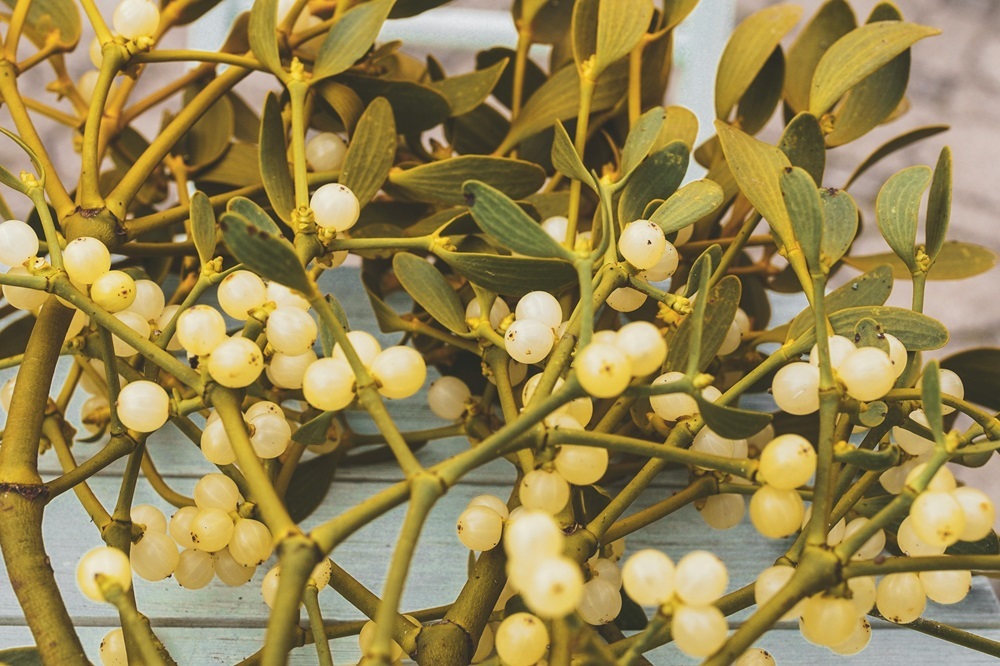Mistletoe: Does it Hurt My Tree?
November 1, 2024
Mistletoe: Does it Hurt My Tree?
Mistletoe, a parasitic plant that attaches itself to many of our large shade trees, plays a significant part in the traditions of the holiday season. As far back as historical records go, mistletoe has been considered a magical plant with many purposes. It was once thought to protect against poison and also improve fertility. In fact, its reputation as an aphrodisiac led to the tradition of kissing under the mistletoe.

Mistletoe
Did you know mistletoe is a parasite?
Technically, mistletoe is a partial parasite, or a hemiparasite. That means it both penetrates and takes away water, nutrients and minerals from its host plant, but it can also grow by itself. Unlike true plant parasites, mistletoe can photosynthesize and make its own food.
Trees that are already weakened or stressed are most affected by mistletoe. Drought, construction damage, and pests and disease can make trees more susceptible to this plant-parasite. Without removal, the mistletoe will continue to grow and take up resources until the host branch eventually dies off. As branches die, your tree goes into decline and can become a hazard to your family.
If you live in an area with extreme storms, keeping trees clear of mistletoe and hazard branches is especially important.
How does mistletoe spread?
Birds and squirrels spread mistletoe by moving the seeds from tree to tree as they forage for food, perch or nest. Every three years, mistletoe goes to seed; therefore it’s best to remove it at least every other year or so so it can’t reproduce. Mistletoe is especially common in cedar elm and oak trees in the North Texas area. But it may be more common in other species in your area. If your neighbor’s trees have mistletoe, there is a good chance yours will eventually acquire it as well.
You have mistletoe. Now what?
If you notice mistletoe growing in your trees, the best time to remove it is during winter months. It’s important to remove the mistletoe before the flush of new spring growth so it isn’t stunted. Plus, it’s easier to find and remove mistletoe in trees that have dropped their leaves for the winter.
Follow up mistletoe removal with fertilization to replenish the nutrients that the mistletoe took away.

